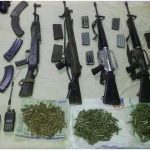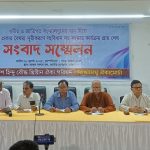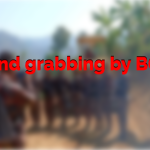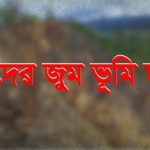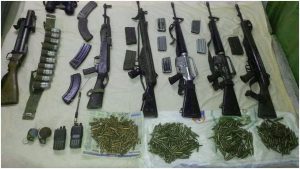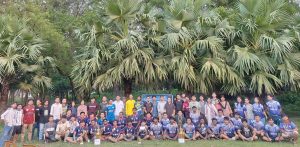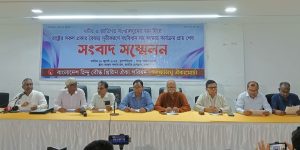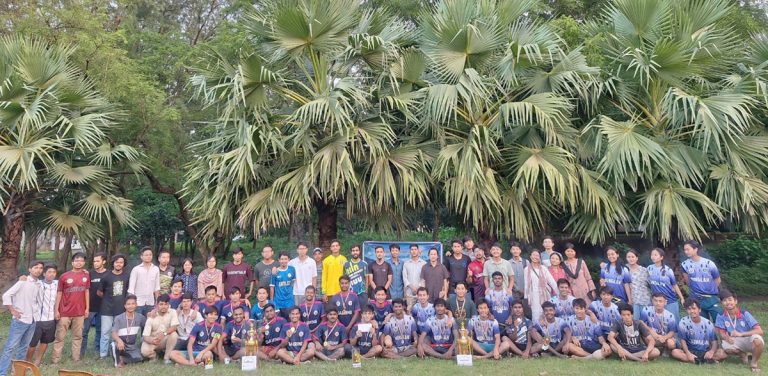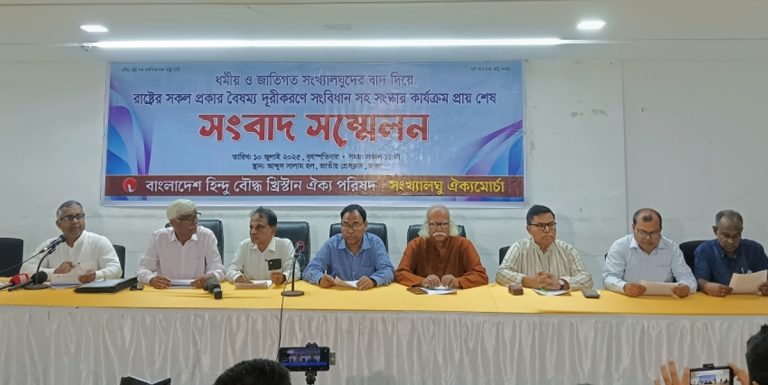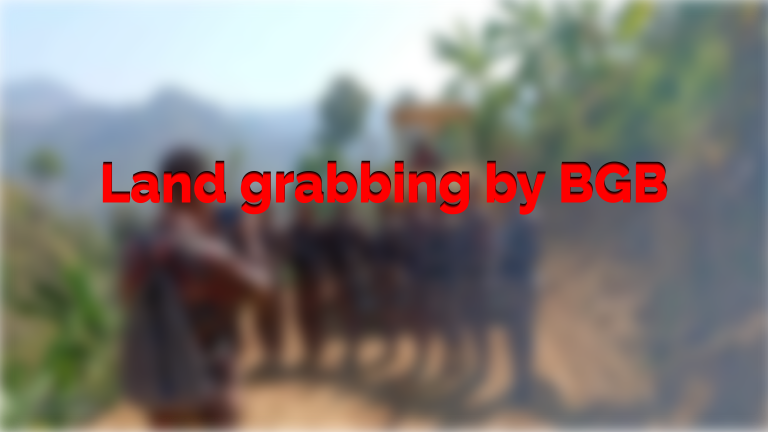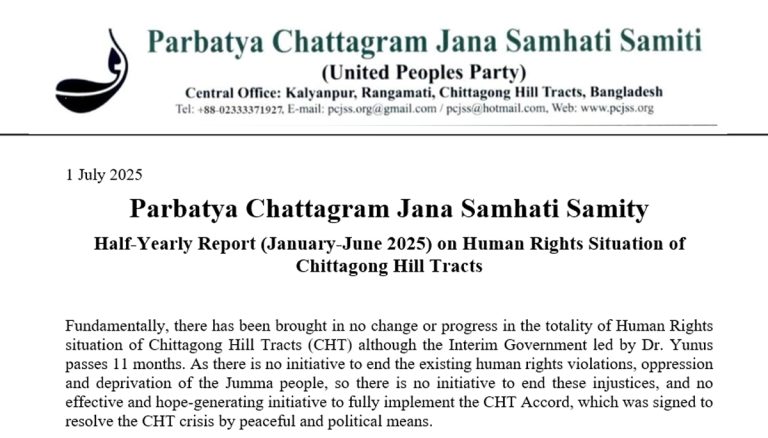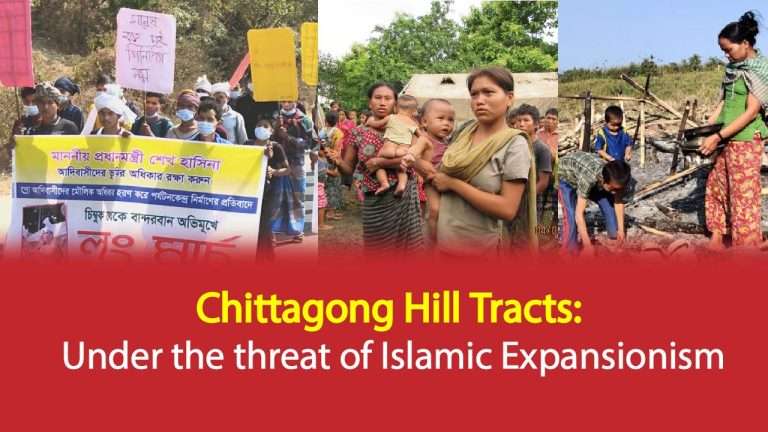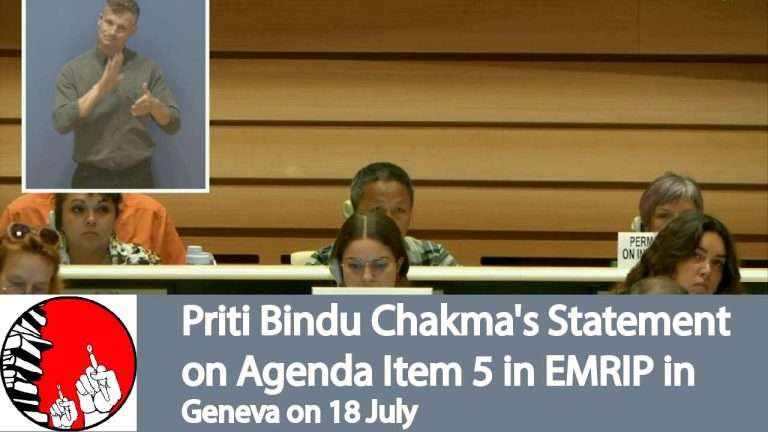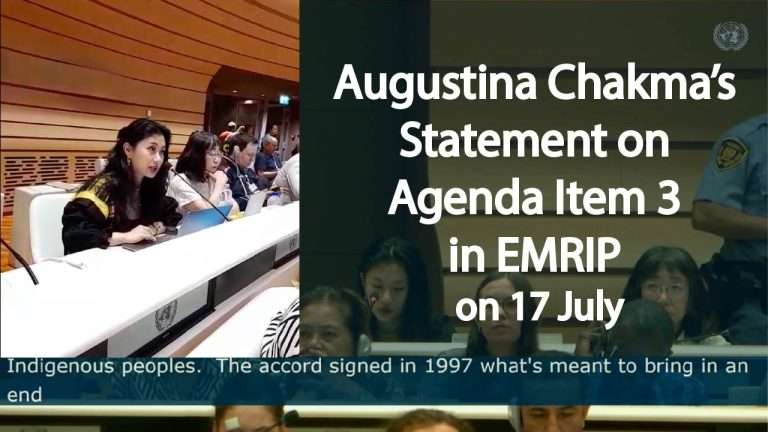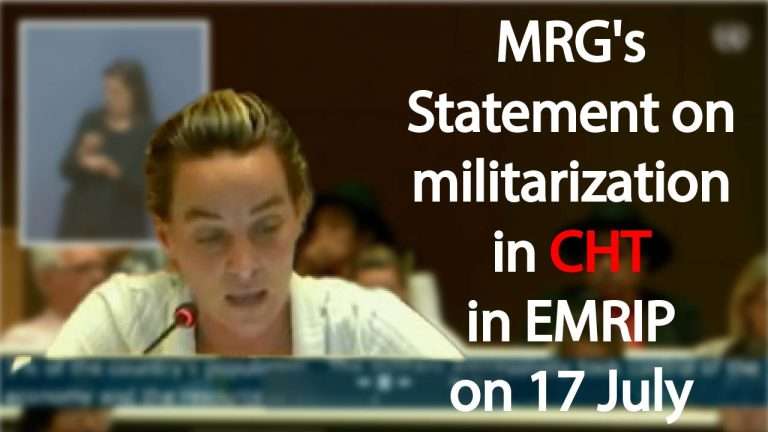Pradhir Talukdar (Rega)
Introduction:
Most recently, Nikhil Chakma from Rangamati has taken an initiative. Considering the historical responsibility of inclusion of the Chittagong Hill Tracts (CHT) in East Pakistan illegally, initiating the application process so that the British government can intervene in the international arena.
In a written petition to the Prime Minister of the United Kingdom, it was stated that when the subcontinent was liberated from the British colony on 15 August 1947, the Chittagong Hill Tracts was supposed to be part of India on the basis of religious partition. The Chittagong Hill Tracts, which was an independence region until the beginning of the British colony in 1860, was incorporated into East Pakistan (now Bangladesh) in an undemocratic, irrational and unjust manner by Sir Cyril Radcliffe, the Chairman of the Bengal Boundary Commission. As a result, on 20 August 1947, Pakistan swallowed the Chittagong Hill Tracts unhindered. So, it was then that the seeds of the Chittagong Hill Tracts became a legacy colony for today’s Bangladesh. Subsequent history is the state-sponsored relocation of millions of Muslims from the plains to the Chittagong Hill Tracts, a series of massacres, land occupations, rapes and gross human rights abuses against the Jumma people.
The rise of the United Nations during the post-World War II period, the end of the British colony, but the CHT continues to suffer the tragic consequences of the mistakes left by the British colony. In 1997, a peace agreement was signed between the representatives of the Chittagong Hill Tracts and the government of Bangladesh, which allowed a limited degree of self-government for the people, but the government of Bangladesh has so far failed to implement it. Rather, it continues to destroy the national existence of minority Jumma people, including the continuation of military rule, continued demographic aggression, and human rights abuses.
Recently, many people are active with this historical issue. As part of this, an organization called Chakma National Council of India (CNCI) has been formed. Here, some revolutionary leaders from Mizoram, Tripura and Arunachal Pradesh have expressed their intention to re-establish the rights of the Chakmas in India and Bangladesh through the entire Indian Chakmas and to make a strong movement against the suffering of the Chakmas due to political mistakes of that era. The CNCI has called for the observance of 17 August as Black Day for the Chakmas. On the other hand, even in the Chittagong Hill Tracts, new thinking has started about this past.
The Chittagong Hill Tracts is the name of a colonial conflict. The time has come for the indigenous peoples of the region to regain their lost self-government. Therefore, solving the Chittagong Hill Tracts problem is historically reasonable, legally applicable and politically important. In response to his appeal, many are saying that Bangladesh is no longer safe for us today. Although the people of the minority Buddhist, Hindu and Christian communities in the CHT want to live peacefully with the majority Muslim people with their identity and respect, it is no longer possible for them to survive in the region for so long due to current suppression of the state apparatus and the situation of ethnic oppression.
Background:
For a long time, the 14,000 sq km Chittagong Hill Tracts had been an independent state with 11 different language speakers in the undivided Indian subcontinent. The inhabitants of this region are collectively called themselves as ‘Jumma’ (high lander). However, in view of the historical dominance in the hill region, the minority Jumma people living here now want to call their national identity as Indigenous Peoples.
The British began to dominate the region in 1757 after the defeat of the Nawab of Bengal, Sirajuddaula, in the battle of Plassey (now in West Bengal, India). However, the Jumma people of the Chittagong Hill Tracts lost their independence and sovereignty in 1860 AD. At the juncture of British rule, the Indian subcontinent was divided into two countries, the Muslim-majority Pakistan and the non-Muslim-majority secular India, in 1947, according to religious differences. At that time a movement was organized under the leadership of Sneha Kumar Chakma demanding the inclusion of the 98% non-Muslim inhabited Chittagong Hill Tracts into India. However, ignoring the policy of partition of the Indian subcontinent and against the wishes of the people of the Chittagong Hill Tracts, Sir Cyril Radcliffe, Chairman of the Bengal Boundary Commission, decided to annex the Chittagong Hill Tracts to East Pakistan. Accordingly, the Pakistani army occupied this hilly region.
Later, in the bloody civil war of 1971, East Pakistan was transformed into a new independent state called Bangladesh. The Chittagong Hill Tracts, therefore, have been submerged in the clutches of hegemony inherited from Bangladesh till date. Thus, after 1947, with the emergence of the then East Pakistan and later the new Bangladesh, the Chittagong Hill Tracts seems to have become another new colony as a legacy.
After the advent of the United Nations in 1945 after the Second World War, all the British colonies gradually gained independence. In that sense, since the Chittagong Hill Tracts is a historically separate excluded territory, there is no reason for another colony to be ruled by new Bangladesh. Today, therefore, it is historically reasonable, legally applicable and politically necessary to restore the Chittagong Hill Tracts to the rightful rights of the Jumma people by freeing them from the shackles of oppression or domination of the majority Bengali Muslim people in Bangladesh.
On 17 August 1947, the Radcliffe Line was drawn to demarcate the partition between Pakistan and India. The Radcliffe Line is named after Sir Cyril Radcliffe, the chairman of the Bengal Boundary Commission. Who was responsible for dividing the 175,000-squaremile area inhabited by 88 million people.
According to the Radcliffe Award, the image of the partition of India is shown on the left and the image of the migration of refugees during the partition of the Indian subcontinent is shown on the right. On 15 July 1947, the Indian Independence Act 1947 was finalized in the British Parliament, one month after the end of British rule in India on 15 August 1947. It was also stipulated under the Act that the Indian subcontinent would be divided into two sovereign states, the Union of India and the Dominion of Pakistan. Prior to the partition of India, about 40% of the entire subcontinent was ruled by the Princely States. These were like subsidiary alliances with the British Empire. These states are not British ruled or part of the British, they are internally independent. So just as the British did not guarantee their independence, similarly the British also divided these states during the partition. India’s independent law left those monarchical kingdoms out of British control and thus ended British rule.
Therefore, states like Tripura have the freedom to decide for themselves whether they will be included in the two newly formed countries or remain independent. At that time, except for one or two, many people lost their existence in India or Pakistan. Pakistan emerged as a Muslim state and the new India as a secular state with a Hindu majority. The Muslim-majority northern provinces of the British Empire formed the mainland of Pakistan. Balochistan and Sindh province, which have a Muslim majority of 91.8% and 72.7% respectively, are completely included in Pakistan. However, 54.4% (Muslim) Bengal in the North-East and 55.7% (Muslim) Punjab in the North-West were not included in Pakistan due to non-Muslim majority. But the western part of the Punjab entered West Pakistan and the eastern part of East Punjab included in the Indian state, which later became the small state of Punjab and two other states.
Meanwhile, Eastern part of Bengal included in East Pakistan and West Bengal became part of India. After the Indian subcontinent became independent, the northwestern province along the Durand Line bordering Afghanistan moved to Pakistan through a referendum. The inclusion of the referendum was rejected by the popular Pukhtun movement, although the province is now Pakistan’s Khyber Pakhtunkhwa.
The population of Punjab is so vast and scattered that the Hindu, Muslim and Sikh populations cannot be divided. As a result, the Muslim League led by Muhammad Ali Jinnah, the National Congress led by Jawaharlal Nehru and Vallabhbhai Patel, and even the British could not make any recommendation in this regard. In addition, if division is made on the basis of religious community, the dividing line had to be drawn directly by road or rail, farming projects, electric power lines and even on individual land. So a well-thought-out line can alleviate much of the problem of farmers being separated from their land or unintentionally or forcibly relocated.
It is known that about 14 million people across the subcontinent have left their homes or livelihoods and migrated voluntarily to the two countries by air, train or road. Many have died or been killed in communal riots. At least 2.0 million people had died of Cholera, diarrhea and other infectious diseases.
Fast and Neutrality:
If the Bengal Boundary Commission had paid attention to the demarcation of the border, it would have been possible to avoid many painful errors. Many such villages were divided, some in India and some in Pakistan. That’s right, with just over a month, Radcliffe has not had much time to look forward to. Its dividing line was drawn in such a way that in many cases the densely populated areas also became isolated. There are also instances where some rooms of a house have been included into India and some into Pakistan. In this way, Radcliffe finalized his decision by drawing the line at the partition of India. But he may not have even thought about the catastrophic consequences of this divisive frontier. Thoughts of all these historical considerations will never be known again as Radcliffe destroyed many of his valuable documents or papers when he left India.
Radcliffe left India on Independence Day when the report was not delivered to the Boundary Commission. According to his own confession, Radcliffe was influenced by his incompetence with the Indian climate and his intention to leave India quickly. That’s right, it took much less time to implement than it did to demarcate the partition of the country. At 5 pm on 17 August 1947, the day before its publication, the representatives of India and Pakistan were given only two hours to read the Boundary Commission’s India Partition Boundary Certificate (Award).
Confidentiality:
It is as true today as day light that India is secretly partitioned to avoid disputes and procrastination. The Partition of India Charter (Award) was finalized on 9 and 12 August, but was kept undisclosed until two days earlier. However, confidential sources said that on 9 and 10 August, Nehru and Patel were informed of the Punjab Boundary Charter through the Indian Secretary at Mountbatten or Radcliffe.
No matter how the Radcliffe Boundary Charter was published, the eastern part of the Sutlej Canal was diverted into India instead of Pakistan. However, the population of both the Hindu and Muslim communities in the said (Tehsil) area was about 5 lakhs. Apparently, the decision was taken for two reasons: (1) the army had an armory in the area and (2) the canal was the only source of water for irrigation in the agricultural lands of the state of Bikan.
Similarly, it is unknown at this time what was Radcliffe’s idea or argument for annexing the Chittagong Hill Tracts to Pakistan. Jawaharlal Nehru and Sardar Patel are said to have regretted Radcliffe’s decision to incorporate the region into East Pakistan, despite the fact that the region naturally moved inside India due to its 98% non-Muslim population.
Similarly, the annexation of Murshidabad and Malda, two Muslim-majority districts of Bengal, to India was kept secret till 17 August, when the national flag of Pakistan was flown there for three days. The reasons behind these decisions may never be known again as Radcliffe destroyed all records and Mountbatten also denies any bias or even the slightest knowledge of any particular issue.
Disputes of Radcliffe Line:
The Radcliffe Line has two major disputes over the Chittagong Hill Tracts and Gurdaspur districts. Other minor disputes include Malda, Khulna and Murshidabad in Bengal and Karimganj sub-division in Assam.
Chittagong Hill Tracts:
Unfortunately, on that day, the Chittagong Hill Tracts, inhabited by 98% non-Muslims (mostly Buddhists), were included to Pakistan. The Parbatya Chattagram Jana Samity (Chittagong Hill Tracts People’s Association) applied to the Bengal Boundary Commission for inclusion in India, arguing that the Chittagong Hill Tracts was a non-Muslim majority area. Since they (CHT people) had no official representation, the issue was not officially discussed or taken seriously. However, judging by the partition policy, many in India hoped that the Chittagong Hill Tracts would be included in India. But that expectation was never fulfilled.
On 15 August 1947, a large number of innocent people in the Chittagong Hill Tracts did not know who they were after. An irrational decision is made without regard to the views of those people whose fate is to be decided. As soon as the Radcliffe Award was published on 17 August, it became known that the Chittagong Hill Tracts had already been included in Pakistan. The inclusion of the Chittagong Hill Tracts in Pakistan was based on the argument that the region was inaccessible to India, that the Chittagong area was widened (substantial rural buffer zone), and above all that it was close to a port city like Chittagong. On this argument, Pakistan was able to achieve demands from the Bengal Boundary Commission forcefully.
Two days later, the rebel section of the Chittagong Hill Tracts People’s Association rejected the award of the Bengal Boundary Commission under the name of Action Committee and hoisted the Indian national flag over Rangamati. Attempts to organize a strong separatist movement under the leadership of Sneha Kumar Chakma, a youth leader of the time, were severely repressed by the Pakistani army.
The late Sneha Kumar Chakma wrote in his book ‘The Partition and the Chakma’: At midnight on 14th and 15th August 1947, the Action Committee appeared in the Chittagong Hill Tracts Deputy Commissioner’s Bungalow with about a thousand supporters. DC Colonel G. L. Hyde came out and greeted them. S. K. Chakma asked the Deputy Commissioner, “Sir, is India not independent?” In reply, “Yes, you are free from now on,” DC said. S. K. Chakma added, “Isn’t the Chittagong Hill Tracts a part of India under India’s independent law, sir?” Commissioner Colonel G. L. Hyde replied, “The Chittagong Hill Tracts are under Indian rule under the 1947 Indian Independence Act.” S. K. Chakma, “Sir, shouldn’t we raise the national flag?”
Deputy Commissioner, “Yes, but we British citizens hoist the national flag when the sun rises. Please come tomorrow in the morning. You will fly the Indian national flag in front of the people on the football field and then I will salute myself. I will then fly the Indian national flag to my office and bungalow where I invite you all to attend. So please join me in hoisting this flag.”
Legal reality and historical oblivion:
Partition is a major historical event for India, Pakistan and Bangladesh as a whole. British playwright Howard Brenton said he first lost interest on the Radcliffe Line when he traveled to India to hear the painful stories of families who had moved from one place to another during the partition. There is no doubt that many English (British) citizens will be overwhelmed with remorse for their human values and sense of responsibility if they know the tragic story of how many lives have been lost in the lives of people across the Indian subcontinent since Radcliffe’s line 68 years after partition.
Artistic illustration in historical literature:
Although many writers have portrayed the horrific consequences of partition on the Radcliffe Line for a long time through their books or photographs, but the history of the award and the role of those involved in its process have not been re-evaluated. Radcliffe’s character is portrayed in Howard Brenton’s play ‘Drawing the Line’ as an honest and principled man. Many unspoken truths of Radcliffe’s eventful life remain unknown to us when it comes to partitioning the country on behalf of the colonial British. Sitting in the bungalow in which Radcliffe was drawing the line of partition must have been shrouded in unknown darkness, just as the darkness of his mind was darkened in those moments.
Radcliffe later regretted the wrongdoing and the tragic consequences of his actions, so he did not even accept the government’s payment in the end, bringing all the maps and draft documents to England and burning them privately. Radcliffe never informed a word to his wife about what he had done in India. The playwright Brenton is deeply disturbed and agitated by the play ‘Drawing the Line’, realizing that millions of hill people have been told different stories of bloody persecution in order to compensate for Radcliffe’s historic mistake as a responsible British citizen.
Lastly, what is the harm in dreaming of survival? What is there to wonder to think about the independent future?
Will the unique national existence of the Jumma people of the Chittagong Hill Tracts last for the next 50 years? Feel free to say today, of course not. It is not at all possible to survive with a separate nationality in the face of extremist Muslim nationalist aggression. In addition to religious and social aggression, cultural aggression is happening faster. It is as clear as day that it is no longer possible to protect the Chakma or any other ethnic group from this aggression, so it seems that there is no point in despairing. However, many still dream of independence or freedom. Many have also drawn a map of the independent Chakma state. Chakma national flag has also been painted. People’s life expectancy decreases and hope increases. This is hope of survival. This is the expectation of living independently for a long time.
(The write-up has been slightly shortened).
